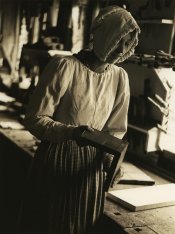Ian Grant
Subscriber
Ian,
Assuming good quality control, do you think the "thick" emulsion films such as Kodak Super-XX would still have a place in the market today?
Tom
I doubt it, I think we'll see either the conventional or T-rain emulsions disappear within 5 years, but I doubt we'll ahve both.
I think that Don, the OP's, point is that T-grain films are the way forward, personally I agree and that goes across all 3 major producers of B&W films companies.
A problem that never seems to be raised is that many Photo courses want their students to use films like FP4 and HP5, or Plus-X and Tri-X and seem very reluctant to embrace Tmax, Delta etc. I've seen this first hand in a few places the most striking in Santiago, Chile where there was a whole arcade of shops selling to the student market, the only films on sale where FP4, HP% and some Fomapanm but no Kodak of any type and no Delta.
So while today's films like Tmax, Delta, Acros etc are far better there's still a reluctance by many to embrace them.
Ian












 ) I really do understand that not everyone is a d.i.y. type, but they're missing a lot of fun, and more seriously -- artistic control.)
) I really do understand that not everyone is a d.i.y. type, but they're missing a lot of fun, and more seriously -- artistic control.)